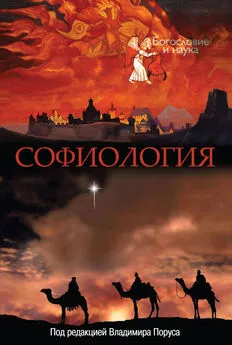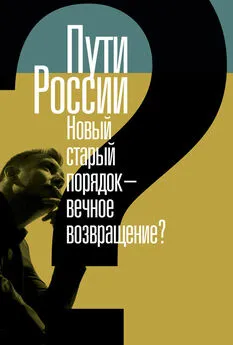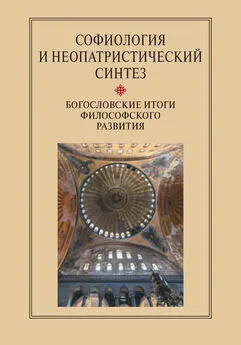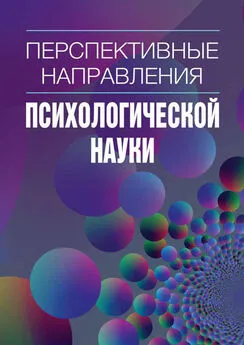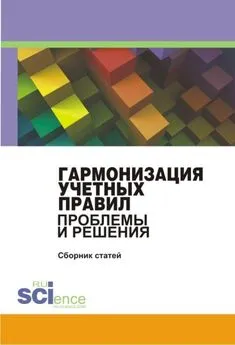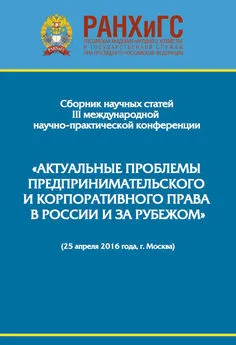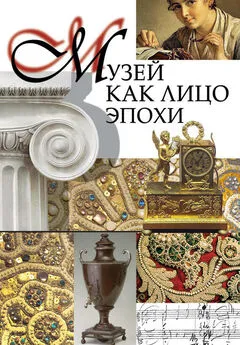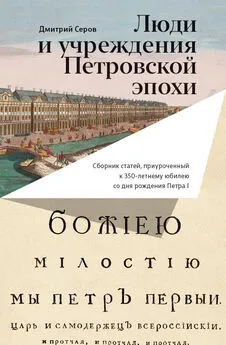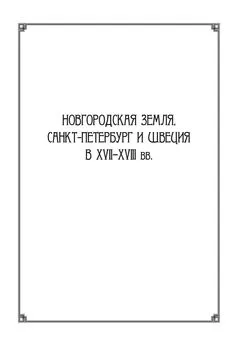Сборник статей - Софиология
- Название:Софиология
- Автор:
- Жанр:
- Издательство:Литагент «ББИ»bb9e3255-c253-11e4-a494-0025905a0812
- Год:2010
- Город:Москва
- ISBN:978-5-89647-221-6
- Рейтинг:
- Избранное:Добавить в избранное
-
Отзывы:
-
Ваша оценка:
Сборник статей - Софиология краткое содержание
Русская софиология конца XIX – начала XX вв. – самобытное и примечательное явление мировой культуры. Вокруг него продолжаются споры, острота которых свидетельствует о непреходящей актуальности поднятых русскими софиологами проблем, важнейшие из которых – способность христианской цивилизации ответить на вызовы времени, необходимость единения человечества перед лицом нарастающих глобальных кризисов, обновление веры, поиски новой рациональности как культурной ценности, разумных оснований диалога между западным и восточным христианством, между христианством и другими мировыми и национальными религиями, между различными культурами.
Настоящий сборник составлен из докладов, представленных на международной конференции «Русская софиология в европейской культуре» (Звенигород, 1–5 октября 2008 г.), организованной Библейско-богословским институтом св. ап. Андрея и Институтом восточных церквей (Регенсбург) при поддержке Католического комитета по культурному сотрудничеству (Рим, Италия).
Софиология - читать онлайн бесплатно ознакомительный отрывок
Интервал:
Закладка:
Recalling Solov’ëv′s reading of Genesis I, his metaphysics of history, we remember that the state (symbolised by the moon) rules the dark, whereas the Church (as if the sun on the firmament) is installed in the midst of light. The third now, the multicoloured stars, correspond to prophets brightly lighting the way in the dark. [161]As we have seen, every man potentially is a prophet. Consequently, the Church′s natural allies are prophets, singular personalities who accelerate progress during history′s lengthy seventh day in order to arrive at an eighth when Universal Church, the archetype of God′s Creation, embodies Sophia and brings forth «social trinity.» «Social trinity» denotes another form of All-unity, namely trichotomy of powers in the name of one single principle. [162]Each representative of free theocracy has his own non-interchangeable sphere of action. The brilliant play on words Solov’ëv presented in order to unambiguously clarify the triple actions′ inter-dependence is untranslatable. The Russian word pravliat (to organise) is the fundamental lexical unit. Various prefixes modify the sense of the word: sviashchennik pravliaet (the priest, i.e. the Church governs) and therefore thus constitutes the legislative (KB). Tsar′ upravliaet (the king, viz. the state administers), thus constitutes the executive (KB). Last but not least prorok ispravliaet (the prophet, the people emends), hence constitutes the judicative (KB). [163]The prefixes na-, u-, and is- make the words convey a specific, non-interchangeable meaning while commonality is maintained in each by the word pravliat.′ This play on words mirrors separation of powers in free theocracy and designates «authority» the Church, «might» to the state, and «liberty» to prophets while each sphere arises out of and stays within the same principle.
The prophet is a "representative of future time." [164]Certainly, prophets play a very difficult, even risky role, for they ignite dynamics within the hierarchical body of the Church itself. Mere reproduction of the existing historical Church facing state and people is avoided only if individual religious creativity – irrespective of whether pronounced by members of the clergy or by lay people – is successfully communicated within the hierarchical body of the Church. The Church bears a conservative character by definition. As it stands, Solov’ëv calls for a reconciliation of nature and spirit, and of creativity and conservatism. These are the central forms of co-creativity. The Church must be successful in reconciling the individuals′ religious creativity and the Church′s proper conservatism. This certainly is a standard problem with regard to any «religious politics» and is a task that enjoys immense ecumenical importance in a world that is characterised by multi-cultural societies. These stand in dire need of reconciliation, a problem Solov′ev certainly well understood.
The next section looks at Bulgakov′s concepts of reconciling the created and the Uncreated, of Sophia. His Filosofiia khoziajstva, 1912, subtitled Mir kak khoziajstvo and the earlier, preparatory treatise Osnovnye motivy filosofii khoziajstva v Platonizme i v rannem khristianstve, 1911, present attempts at an ontology of economy. [165]Fundamental Motives discusses nature in Platonism and in early Christian thinking and prepares the Philosophy of Economy, a comprehensive work that was inspired by Bulgakov′s desire to «overcome» Marx′s «economic materialism.from within» by unmasking its limitations as an «abstract principle,» [166]an effort that recalls Solov′ev′s Kritika otvlechennykh nachal.
In Osnonye motivy filosofii khoziastva v pannem Khristianstve i v Platonizme, Bulgakov emphatically declares the Platonic ideas as to have fulfilled a similar function as does Heaven. Yet, neither Plato nor the Neo-Platonists successfully built a ladder between spirit and matter, but instead left a dreadful abyss between them. Christian thought then offered answers to questions posed by Plato and substituted impersonal erotic ascent by Christ′s personal love. Christianity substituted the Platonic «ideas» by the Divine Sophia. [167] Of course, such a sentence requires further elucidation of Bulgakov′s sophiology
For most scholars, theologians or philosophers, concerned with Bulgakov it has become almost a commonplace to differentiate either between the creaturely and the heavenly Sophia (the former bearing shares of the latter), or between an earlier (more philosophical) and a later (more theological) conception of it. In either case, the first conception does not appear as perfectly reconcilable with the second. In my view, the Russian Bulgakov specialist Sergej Khoruzhij most clearly has understood the solution to this problem. As he suggests, the Bulgakovian Sophiology substitutes the «impersonal» Platonic «all-Unitarian ontology» by an ′all-Unitarian personal ontology [my expression, KB].′ He ascribes Sophia – correlating to the Aristotelian ousia – to each of the three hypostases respectively. [168]By simple logics, this three-fold construction defines the heavenly and the creaturely Sophia as signifying one and the same. The ′sophianic′ nature of God reaches out into the world. In Ipostas′ i ipostasnost′, 1924/25, the dichotomy of the created and the Uncreated is explicitly at stake. This writing shows the development of a hierarchy in Bulgakov′s vision of the different incarnations of Sophia. Those modes and forms are what he calls a «hypostasis,» viz. the essential nature of a substance as opposed to its attributes. Ipostasnost′ denotes the potentiality of someone or something to turn into a hypostasis, i.e. to incarnate the Godly substance, Ousia-Sophia, on Earth. [169]In this text, Bulgakov comprehensively discusses her modes and forms from the highest in God to the highest on earth, which, of course, is the Church. [170]
Already in his early Philosophy of Economy Bulgakov maintained, "(t)he purpose of economic activity is to defend and to spread the seeds of life, to resurrect nature. This is the action of Sophia (italics mine, KB)." [171]He explicitly refers to Nikolaj Fedorov s obshchee delo: «The content of economic activity is not the Creation of life but its defence, its resuscitation from a deathlike state.» [172]My analysis thus wonders: How is resurrection possible? What exactly is resurrection and what is its relation to cognition? My analysis turns around this complex of questions.
The foreword of Philosophy of Economy refers to Solov′ev′s notion of «religious materialism.» We read that it refers back Athanasius of Alexandria, Gregory of Nyssa, and other fathers of the Church, whose teachings, as Bulgakov regrets, merely present "dead capital: "…"economic materialism," on the one hand, and «idealistic phenomenalism,» on the other hand, were built on its «ruins.» [173]Let us now attempt to understand what Bulgakov made from these «ruins.»
In Svet nevechernyj, 1916, a writing that testifies to his becoming more and more a theologian, Bulgakov explicitly refers to Gregory of Nyssa′s teachings on Creation and on resurrection: [174]Gregory developed the idea of Creation in two acts: «general» (obshchee) and «partial» (chastnoe) Creation, viz. Creation «in the beginning» and in a second step during the «six days.» Bulgakov quotes: «In the beginning God created the heaven and the earth. And the earth was without form, and void: and darkness was upon the face of the deep. And the spirit of God moved upon the face of the waters.» [175] «In the beginning» then is another expression for «Sophia.» Creation began in «Sophia;» she is «potentiality,» is a "unity of opposites, a coinicidentia oppositorum (italics mine, KB)." This way Sophia is «doublecentred,» the Sophia is the «architect» of the earth and simultaneously is «transcendent» to it, for the world is created within the distance between heaven and itself. The difference between both, between «idea» and «matter,» is the «foundation» of Creation. The establishment of a «living ladder» connecting Earth and Heaven is the final goal of the world′s historical process." [176]Following Gregory of Nyssa, Bulgakov maintained, too, that after God′s first Creational act further development of the Created takes place only by constant «creative participation» of matter (material), i.e. of the Earth (zemlia) itself. Sophia is the marrow of «Godearth» (bogozemlia). Sophia is the true «apotheosis» of matter as the birth of life originates herein. [177]Thus, the present world is good as God′s creation, but is not yet perfect. Creation has not ended yet, but the bogochelovek is entitled to continue Creation. How did Bulgakov define co-creatorship?
As in Solov’ëv, in Bulgakov, too, there is no dichotomy between matter and spirit, between body and soul. In each case, Bulgakov, has taken the distinction one ontological step back from dualism. Matter does not signify evil, but is merely shapeless, dependent upon form and upon its association with the Divine. The human person itself is made of spirit and matter and must properly dispose of each. If this correct, we must analyse in the next analytical step the possibilities, which pertain to man.
His Priroda v filosofii Vl. Solov′eva, 1911, looks at the latter′s variant of «religious materialism» acknowledging matter as "sacred corporality (sviataia telesnost′) ." If man knows resurrection, the same must be true for nature as a whole, even though there certainly is a difference in quality. Logical thought would have to either deny man′s spiritual essence or admit it for all nature and all creatures. [178]Despite the fact that Solov’ëv never developed this concept into a refined, separate philosophical discourse, Bulgakov praised him for having prepared the ground for a magnificent Christian metaphysics that allocates the sparkling idea of nature as the «other God» or the "second absolute: " [179]"Nature must be the visible spirit, and spirit must be the invisible nature.′ [180]Nature is humanised by becoming man′s «peripheral body, submitting to his consciousness and realising itself in him.» [181]
His early religious philosophy already turned around the question of "man in nature and nature in man." [182]The content of all activity – which is economic activity – is mere struggle between life and death, a matter of pure survival. [183]Yet, this struggle is not a struggle between «two principles,» but rather a struggle between «two states.» Life is a principle that differs from death in its potential for «self-consciousness.» [184]Potentially, all inanimate matter is organised by life and concentrated in "knots of life [uzelki zhizni]" interconnected to each other. [185]Nature waits for being man′s spiritual «peripheral body.» [186]This is the meaning of Creation in two acts, the second of which points to human and nature′s co-creatorship.
Already Bulgakov′s early Philosophy of Economy implicitly contained this conceptualisation of Creation: while production is the conscious transformation of dead inanimate matter into a spiritualised body, consumption is «partaking of the flesh of the world.» Life is the"…capacity to consume the world" our bodily organs being"…like doors and windows into the universe, and all that enters us through these doors and windows becomes the object of our sensual penetration and becomes in a sense part of our body." [187]Nourishment is the most vivid means of «natural communion,» because it allows man to partake".of the flesh of the world." [188]Nourishment is immanent to our world, whereas the Eucharist meal, «.nourishes immortal life, separated from our life by the threshold of death and resurrection.» [189]Production and consumption hence is a form of spiritual communion with nature. Seemingly, Bulgakov redefined the three cornerstones to every economic theory.
Читать дальшеИнтервал:
Закладка:
